Bill Peckmann &Books &Comic Art &Disney 23 May 2013 06:36 am
Junior Woodchucks
Bill Peckmann forwarded this wonderful package of comic stories. They’re three Junior Woodchuck stories by Carl Barks; classic ones, at that. It’s always great fun to revisit the Donald stories by Barks, so without any more wasted time, here we go to Bill:
- In 1951, Donald Duck comic book artist Carl Barks had stepped up to the next level of his extraordinary creative powers. Lucky for us little ankle biters then, that was the year he introduced Duckburg’s memorable kid’s organization, the “Junior Woodchucks”. (Boy, did we all long to join up also!)
Here from that year are two of the first JW stories. It only went uphill from there, the JW’s eventually got their own comic book.These couple of stories are reprinted and re colored from Gladstone Publishing.
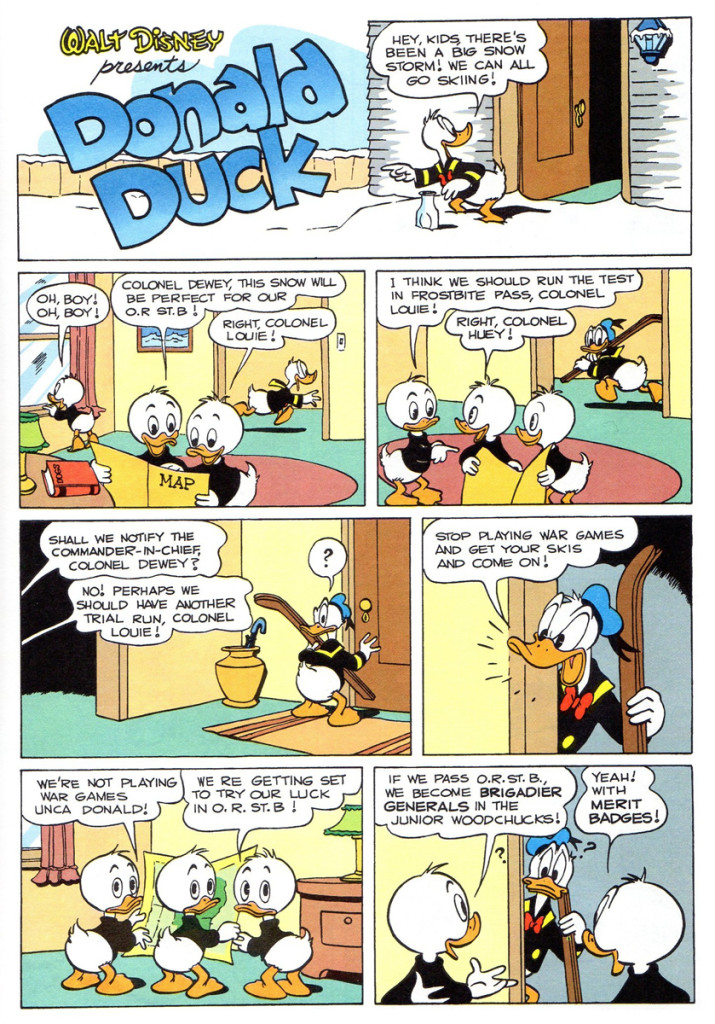 1
1
The first “Junior Woodchucks” story appeared in “Walt Disney’s Comics and Stories” #125, Feb. 1951. This second story is from “WDC&S” #132, Sept. 1951.
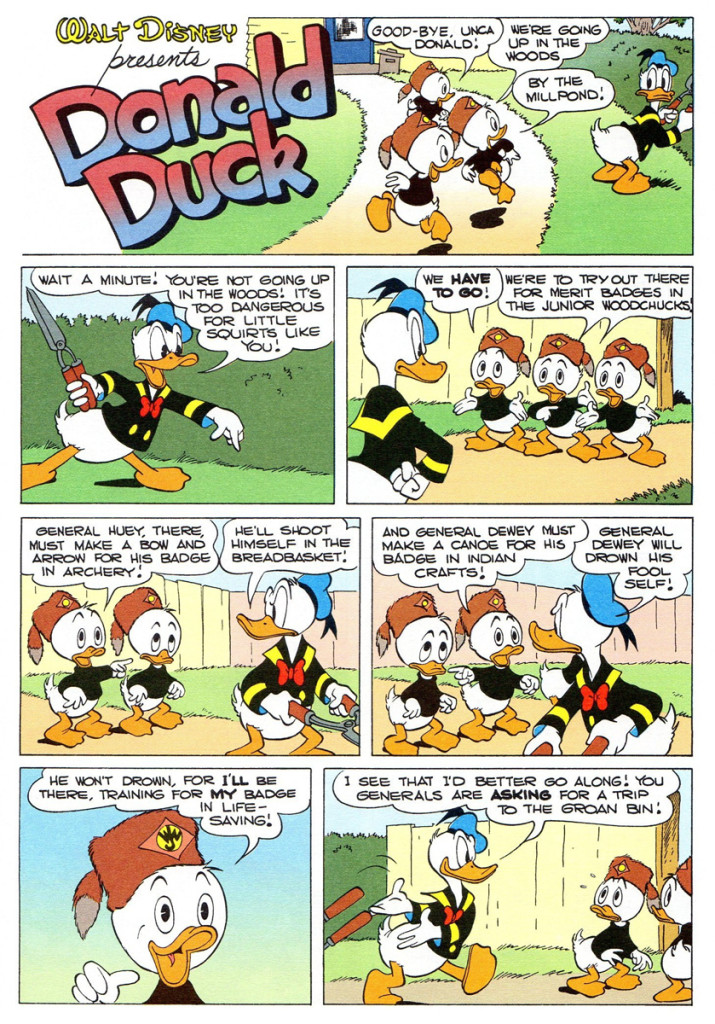 11
11
“Walt Disney Comics & Stories” #132 gave us little squirts an extra bonus; not only did it contain a Donald Duck story by the “good guy artist”, there was also a second story in that issue illustrated by his deft hand! Even though the “Grandma Duck” story wasn’t written by Barks, it still has the master’s touch in all of those beautifully rendered panels.
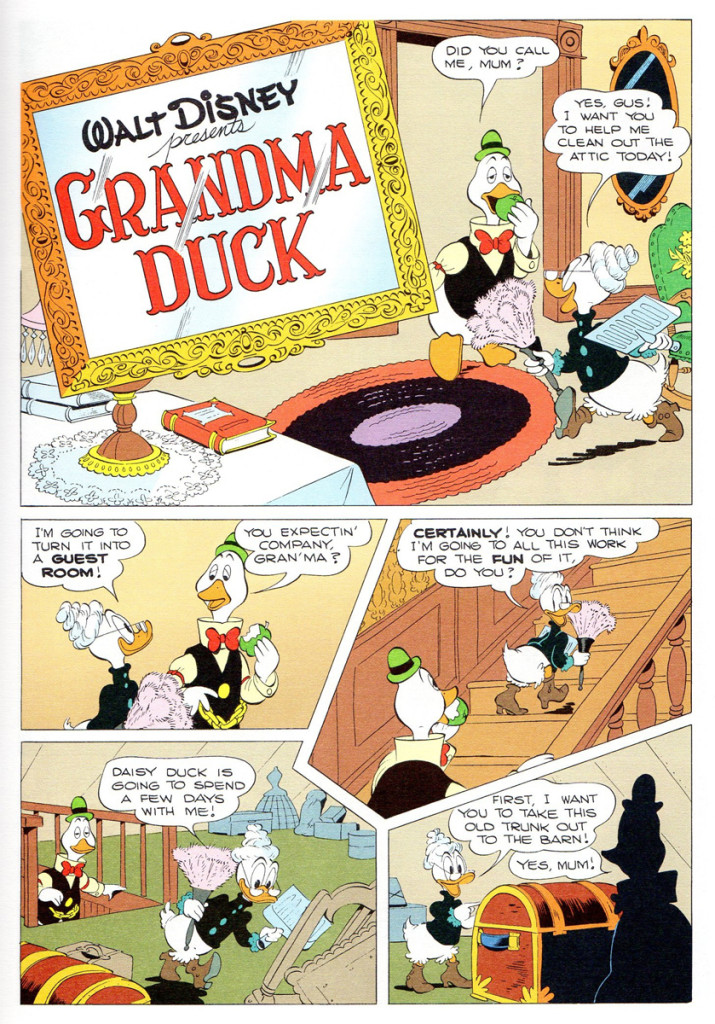 21
21
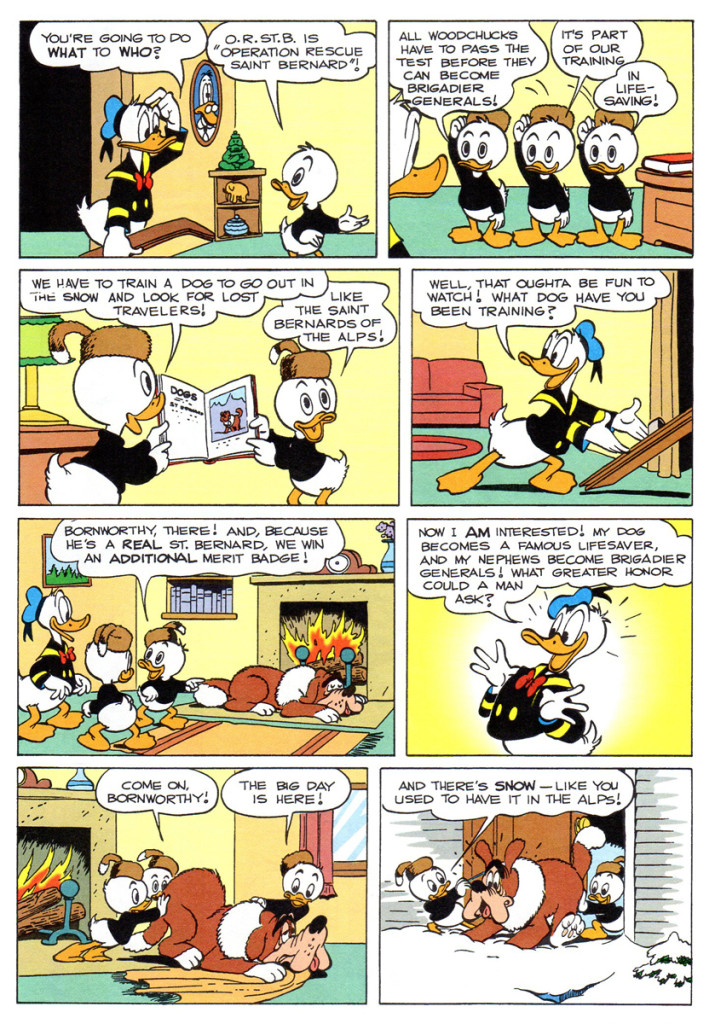
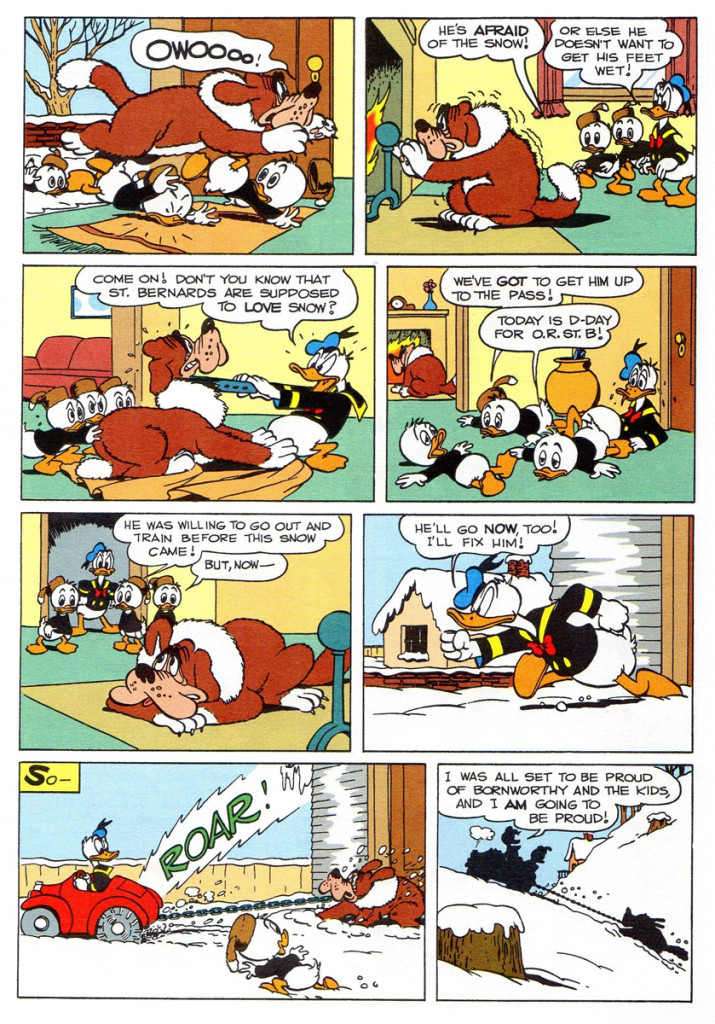
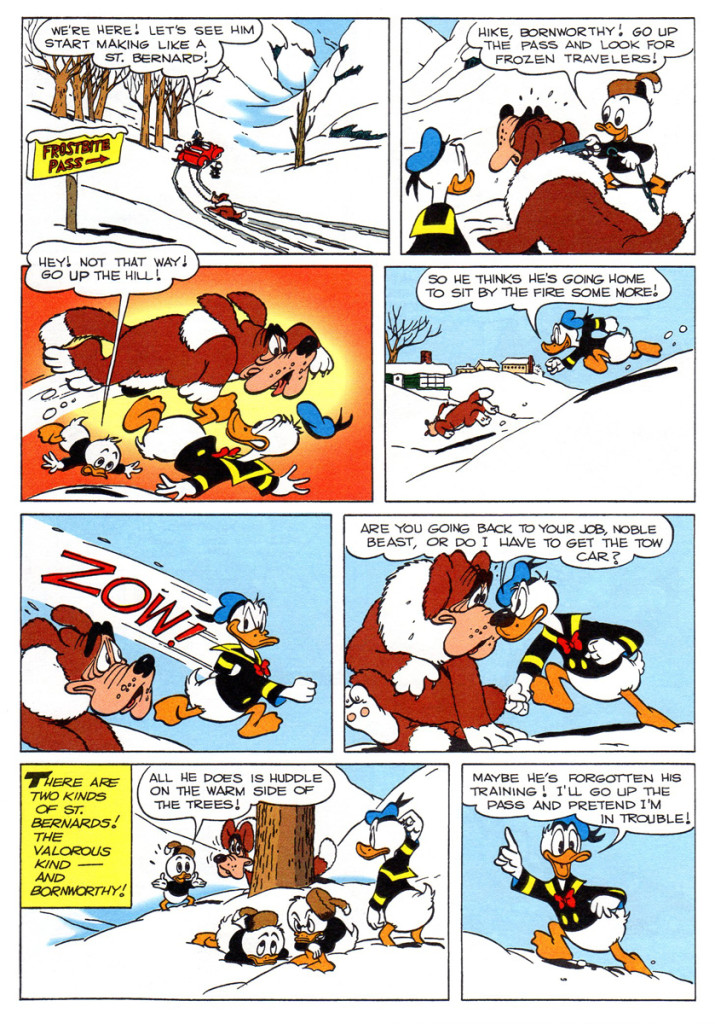
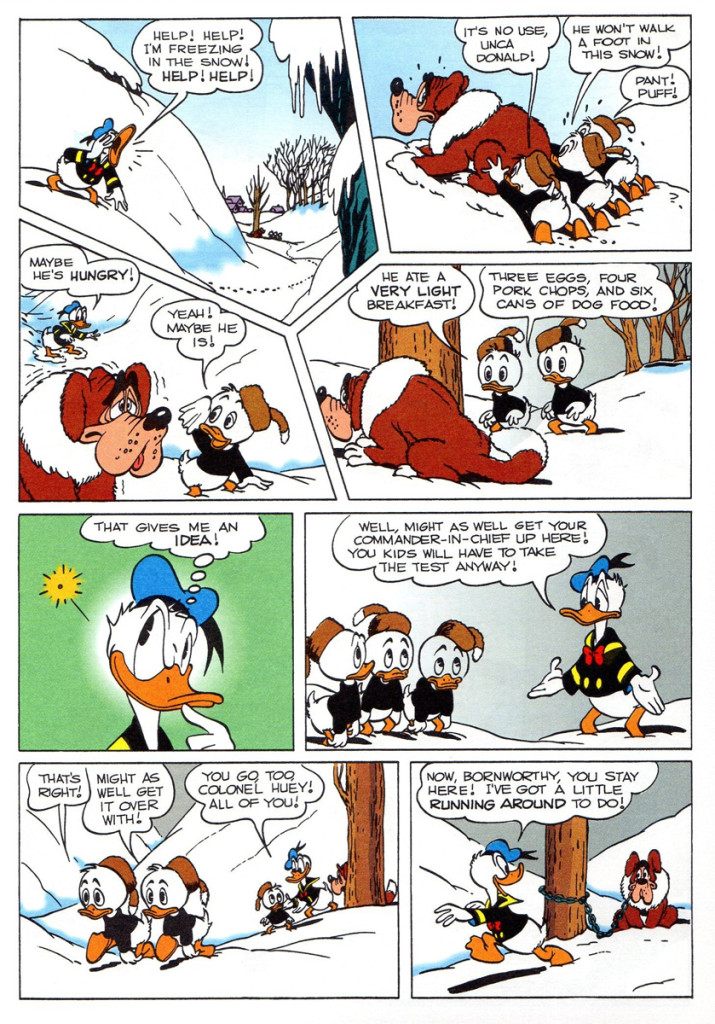
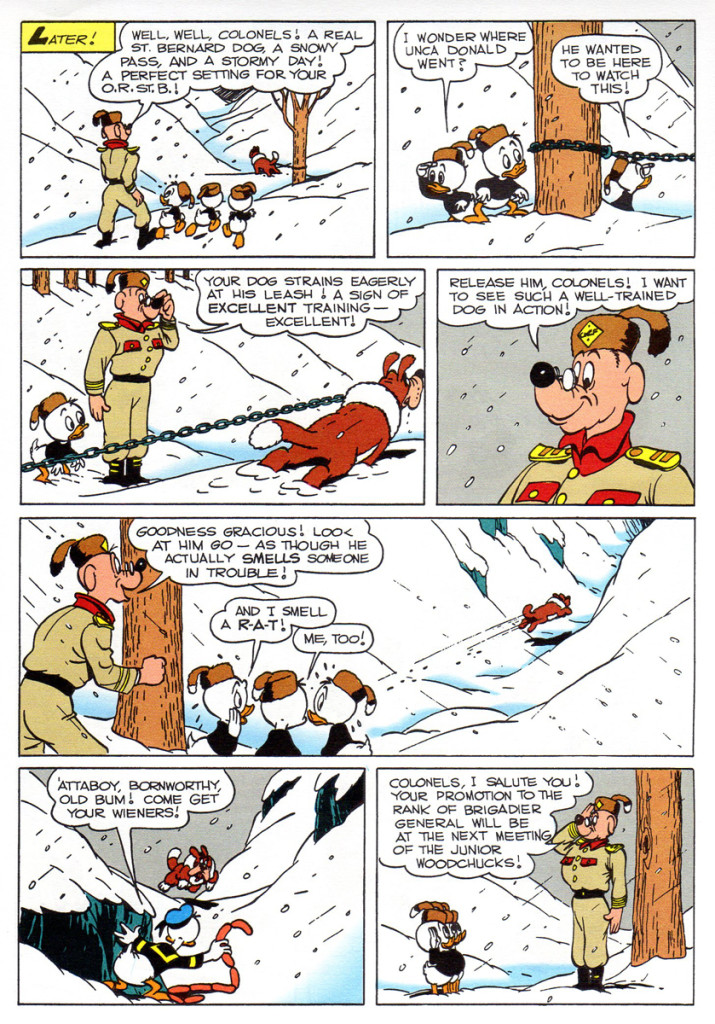
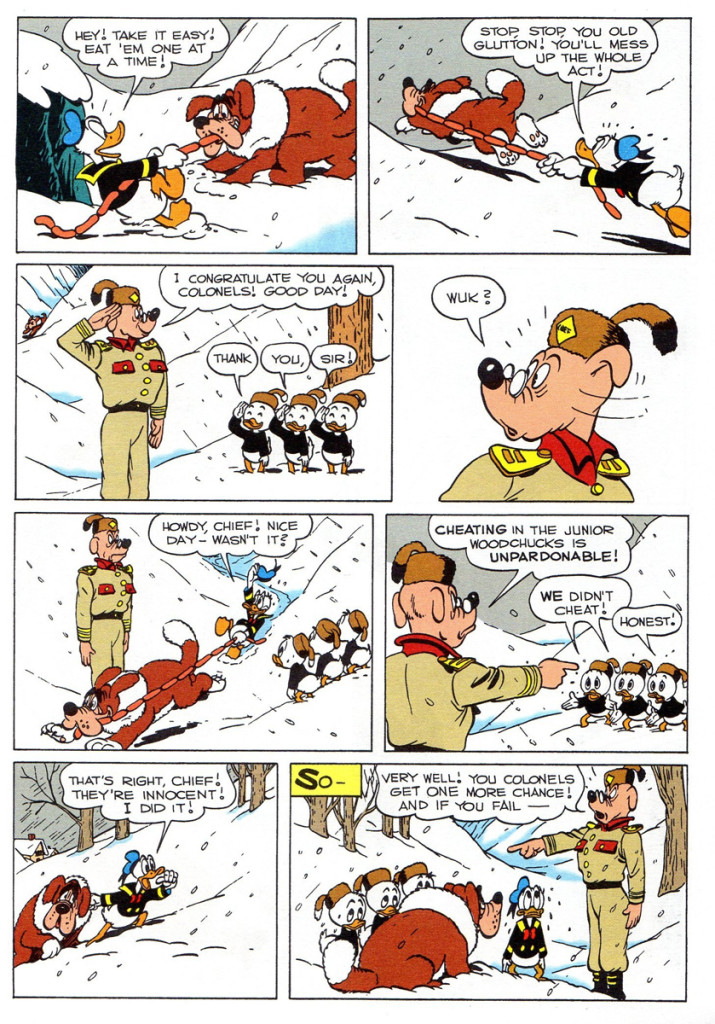
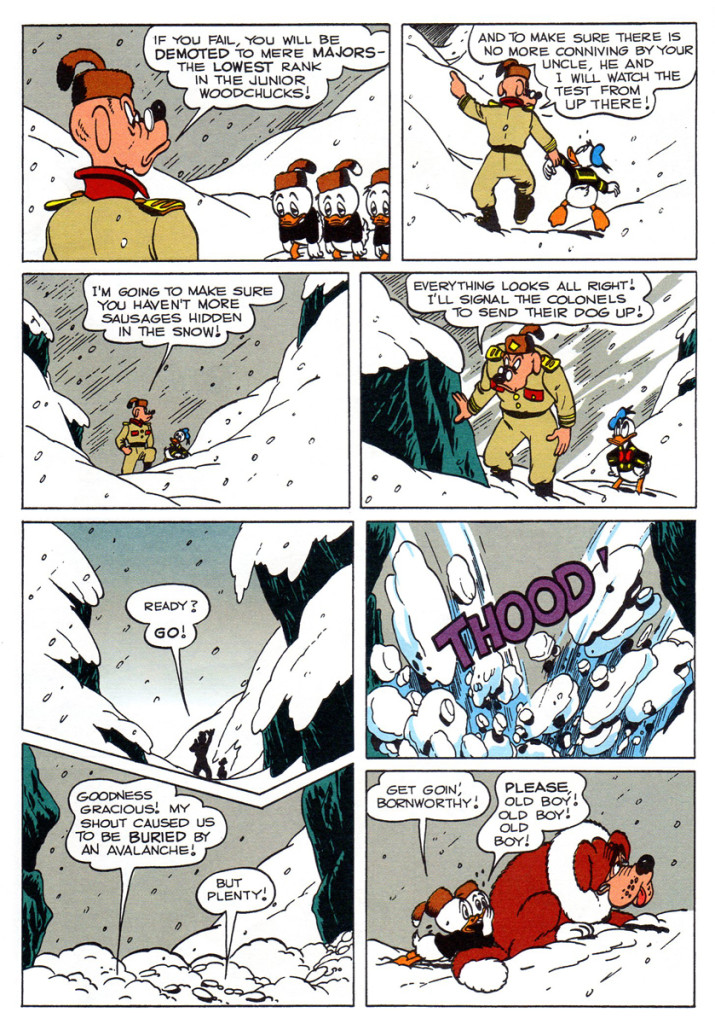
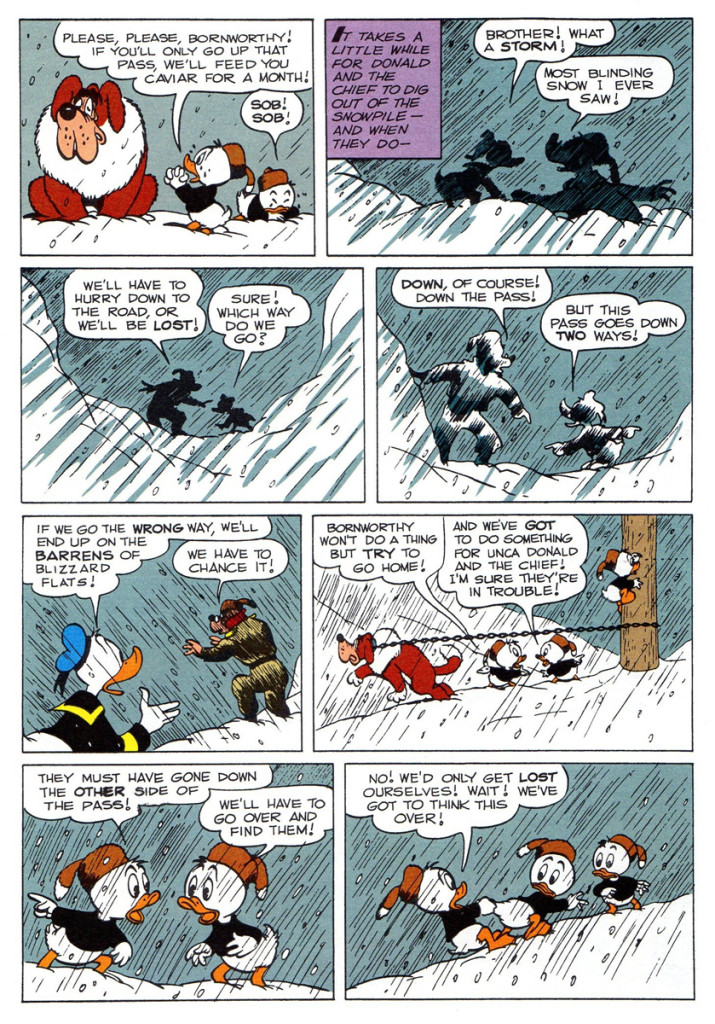
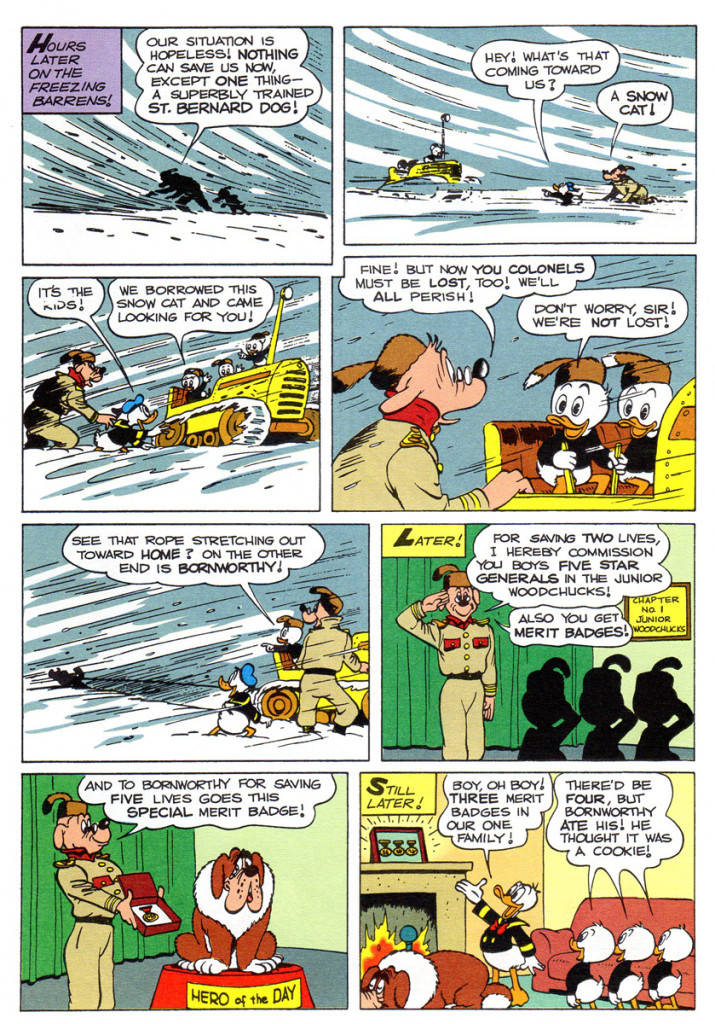
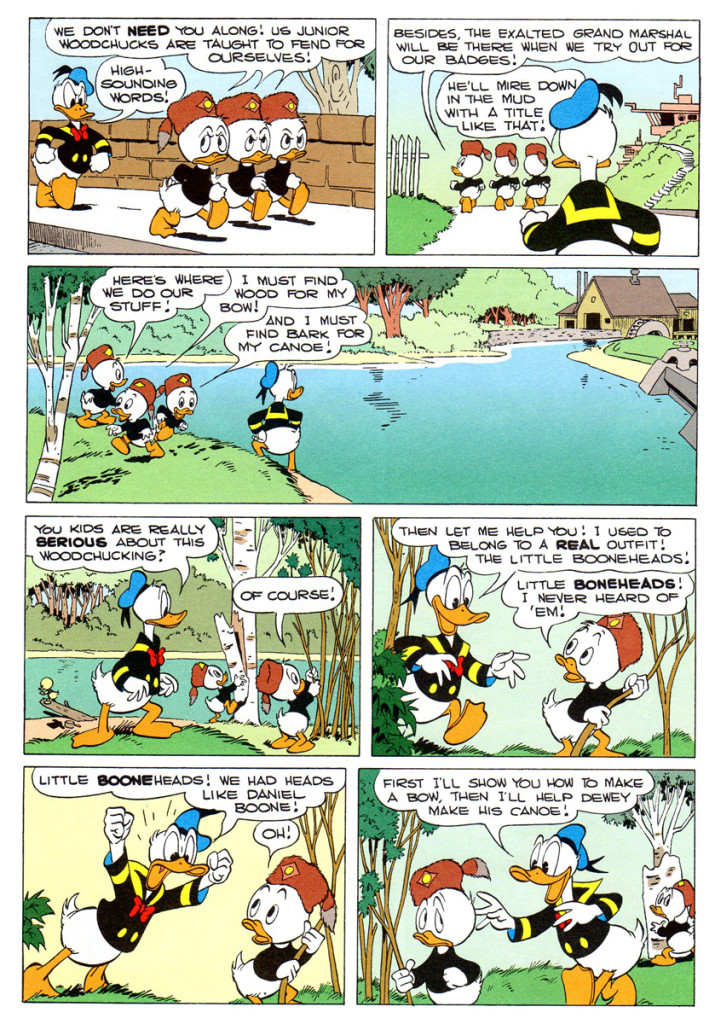
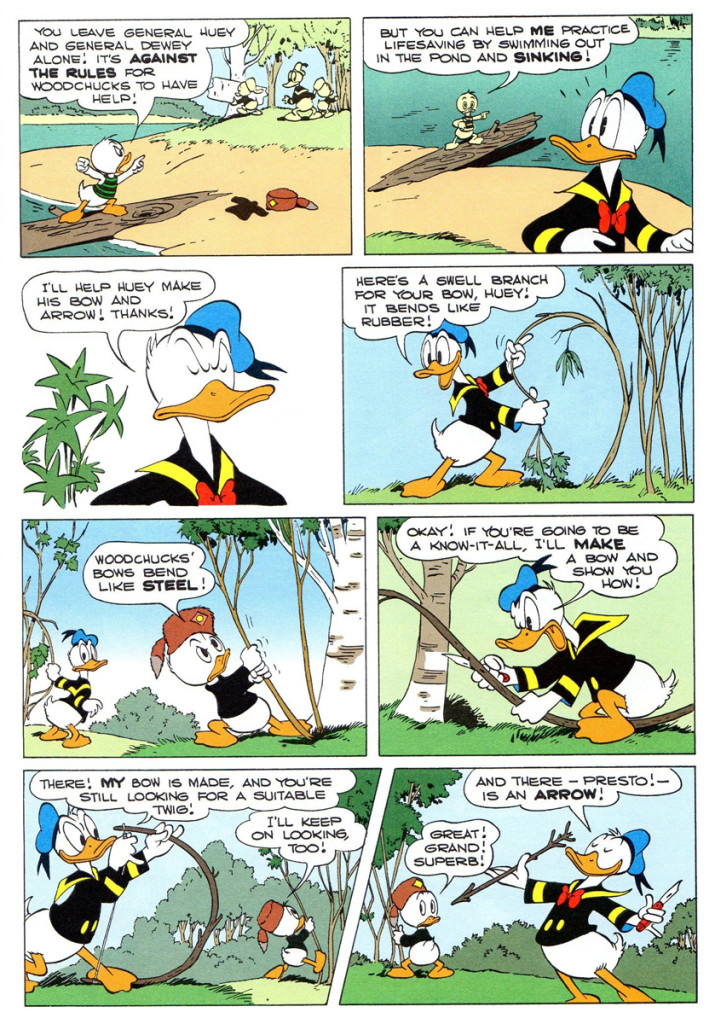
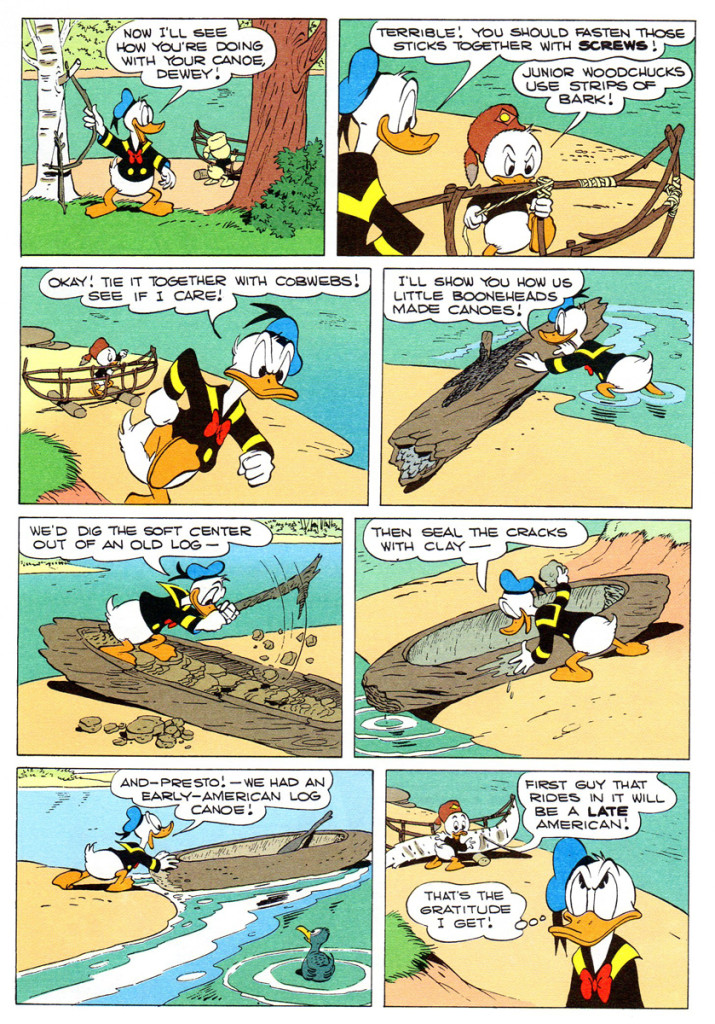
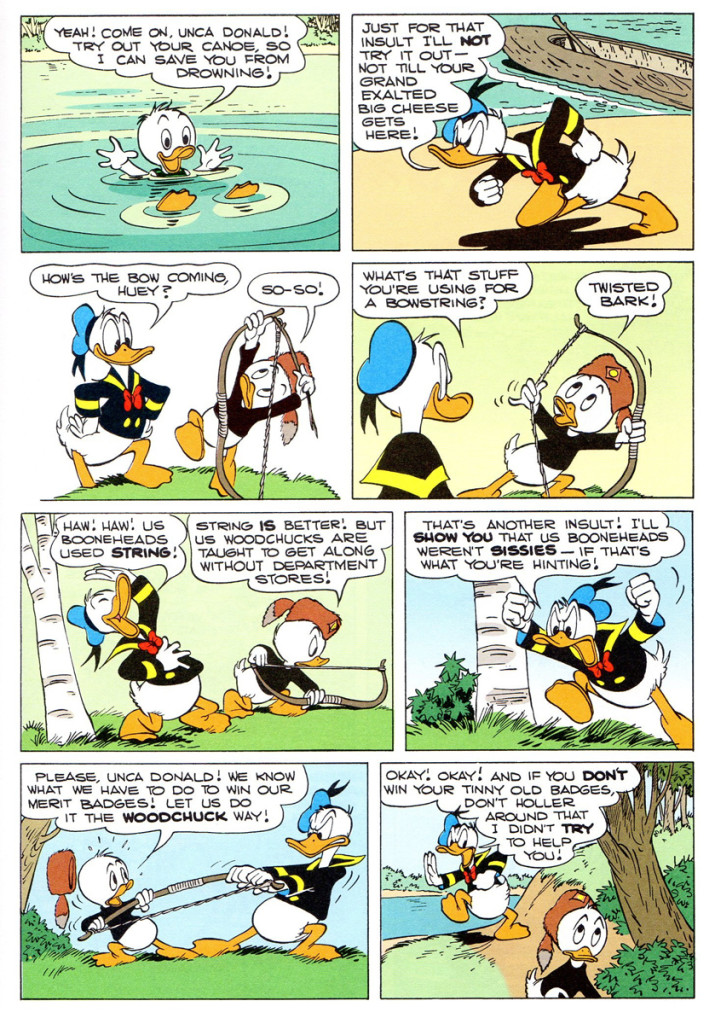
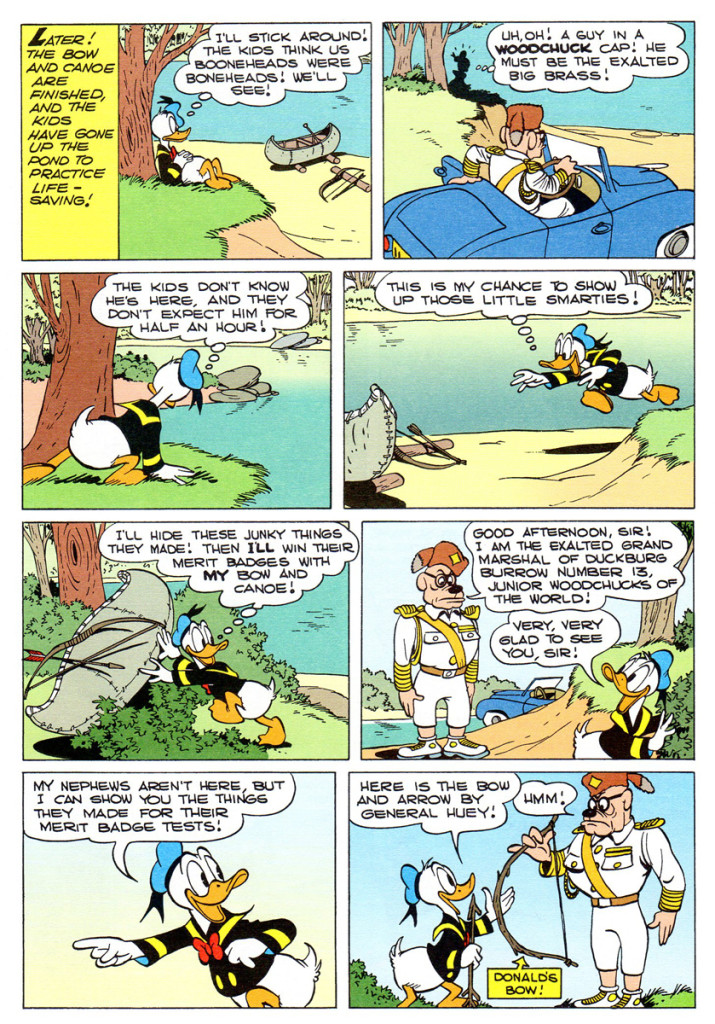
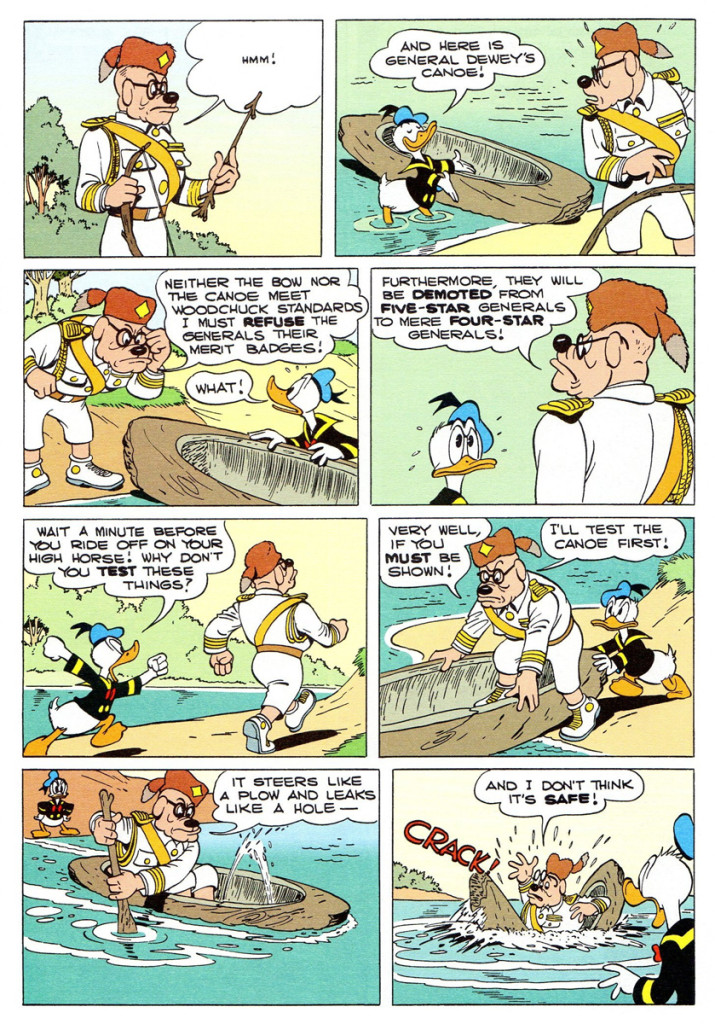
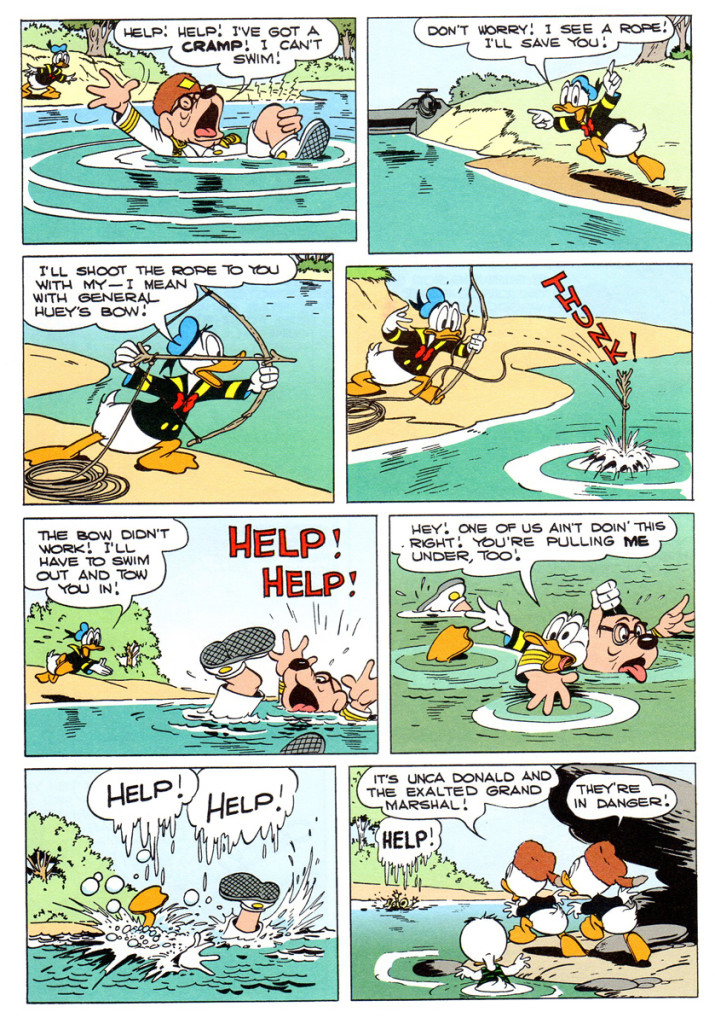
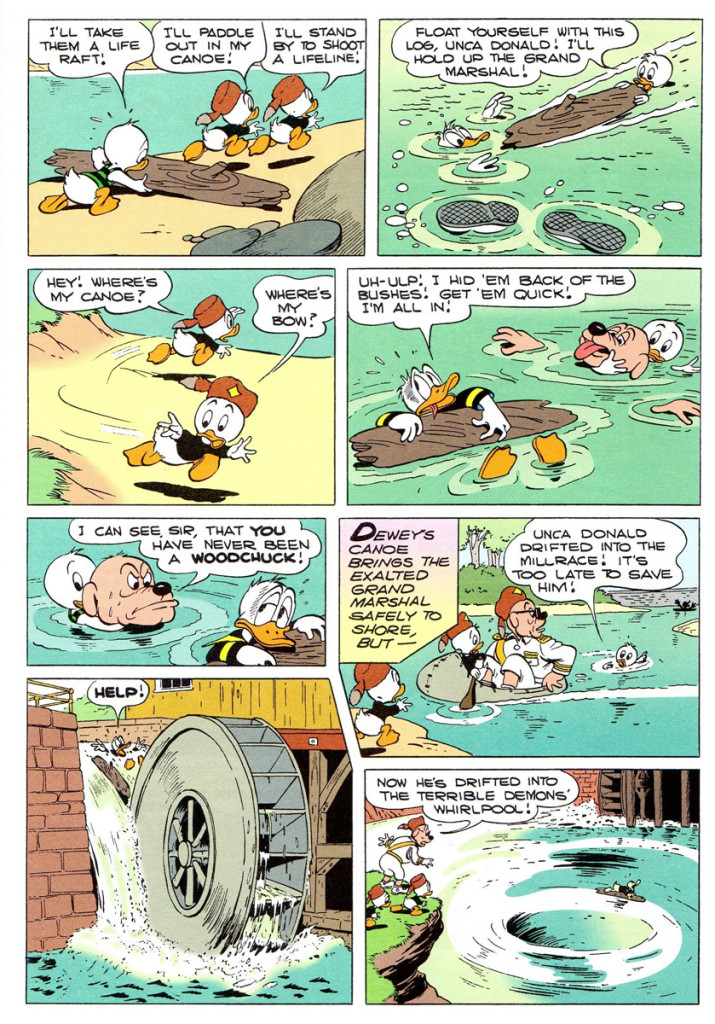
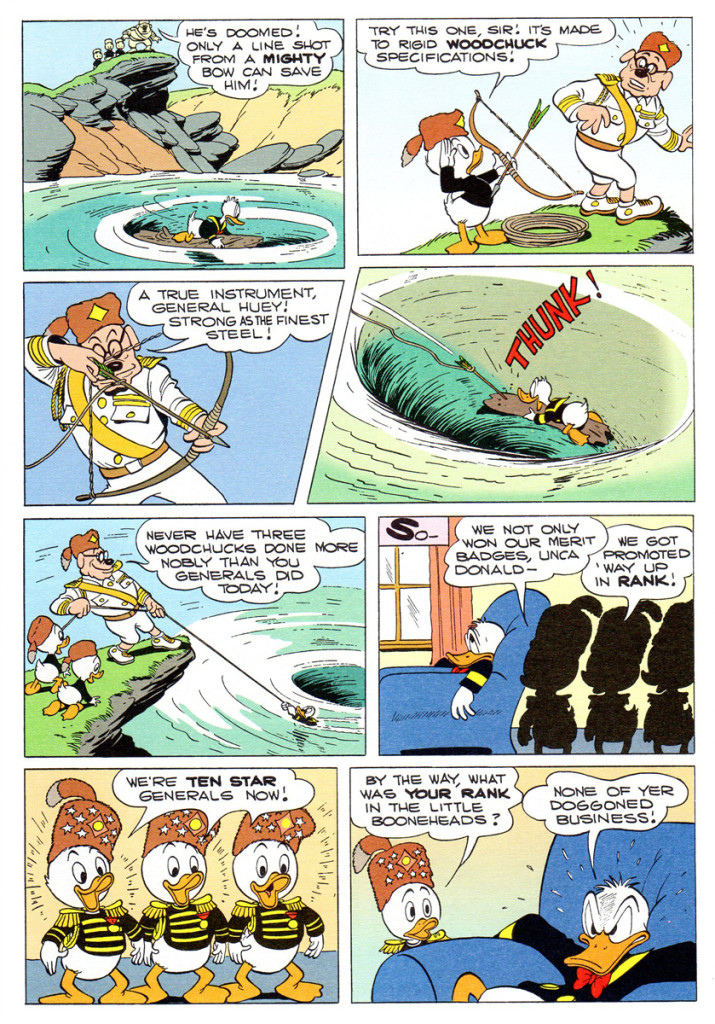
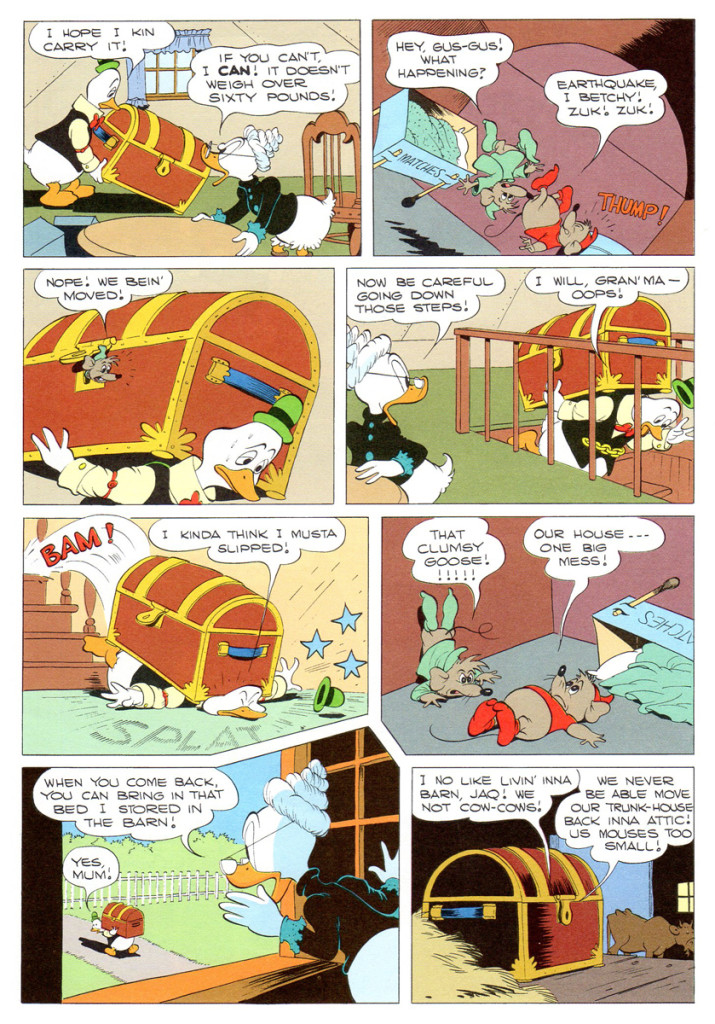
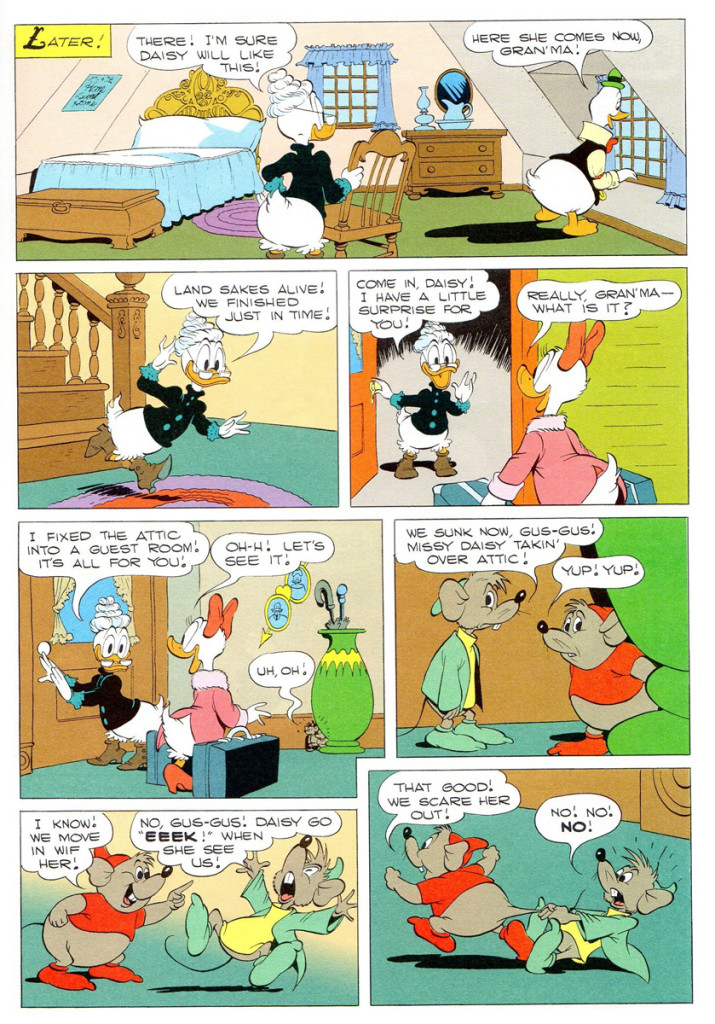
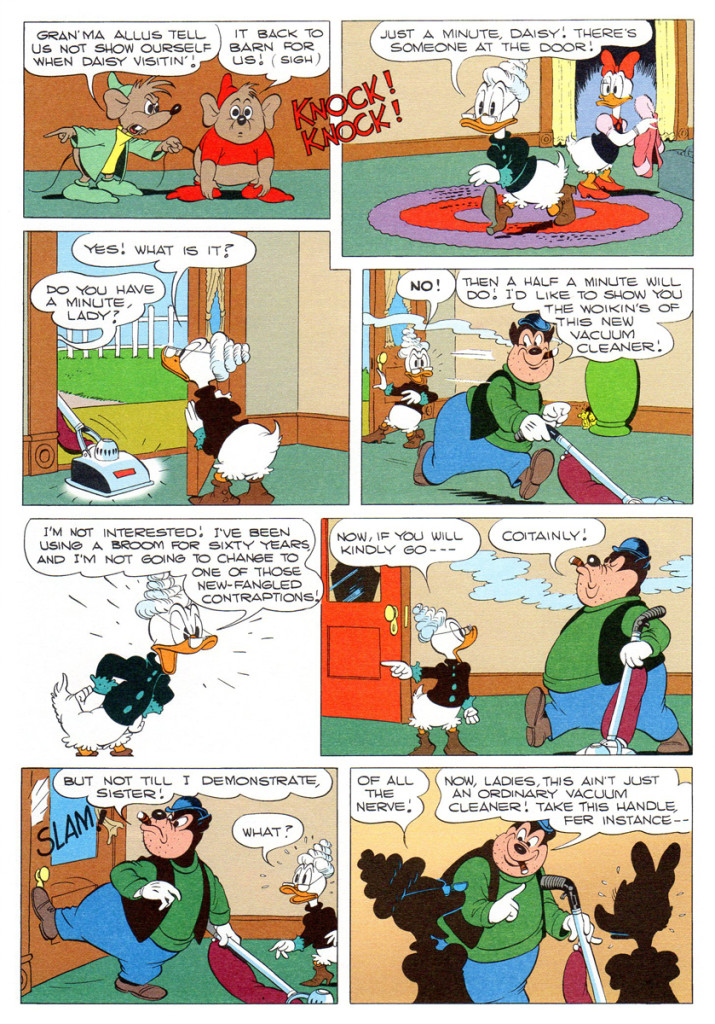
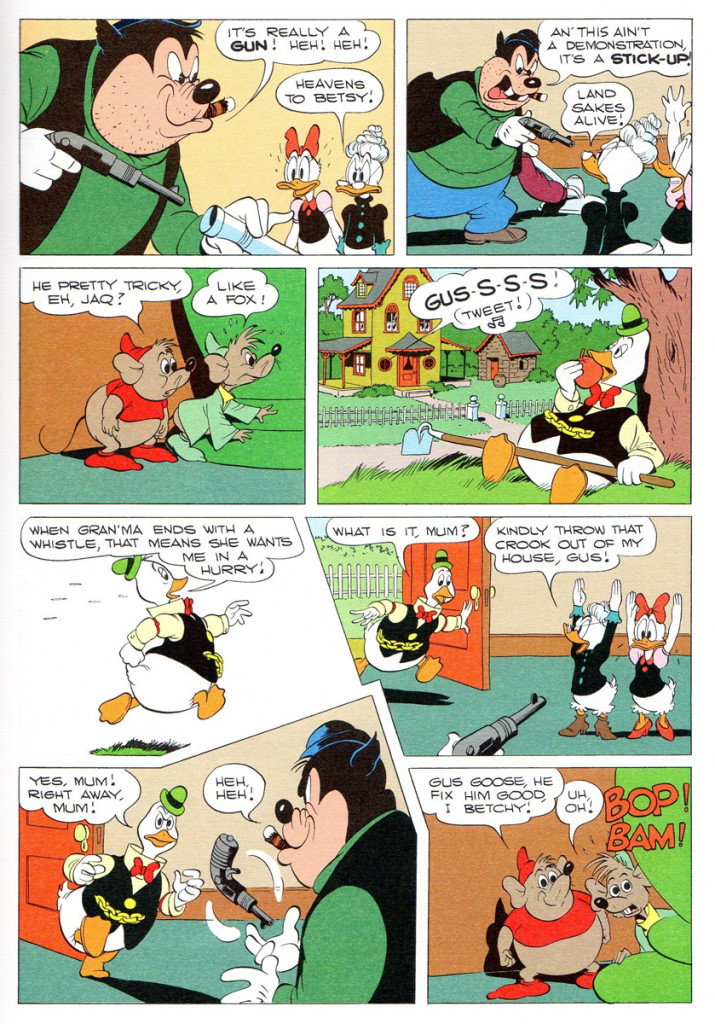
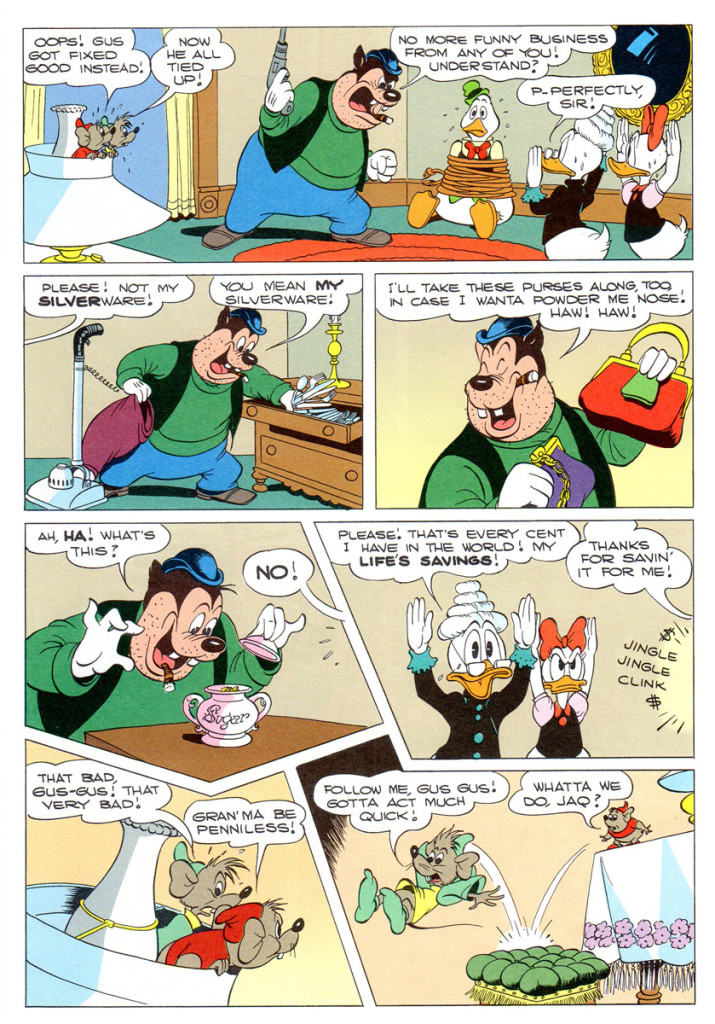
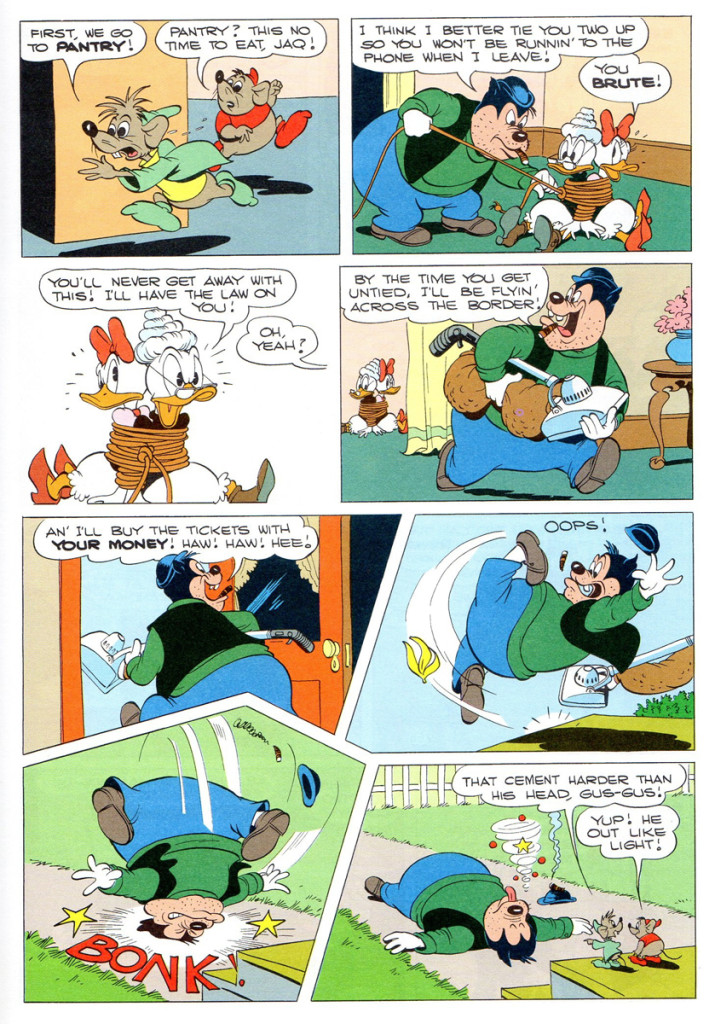
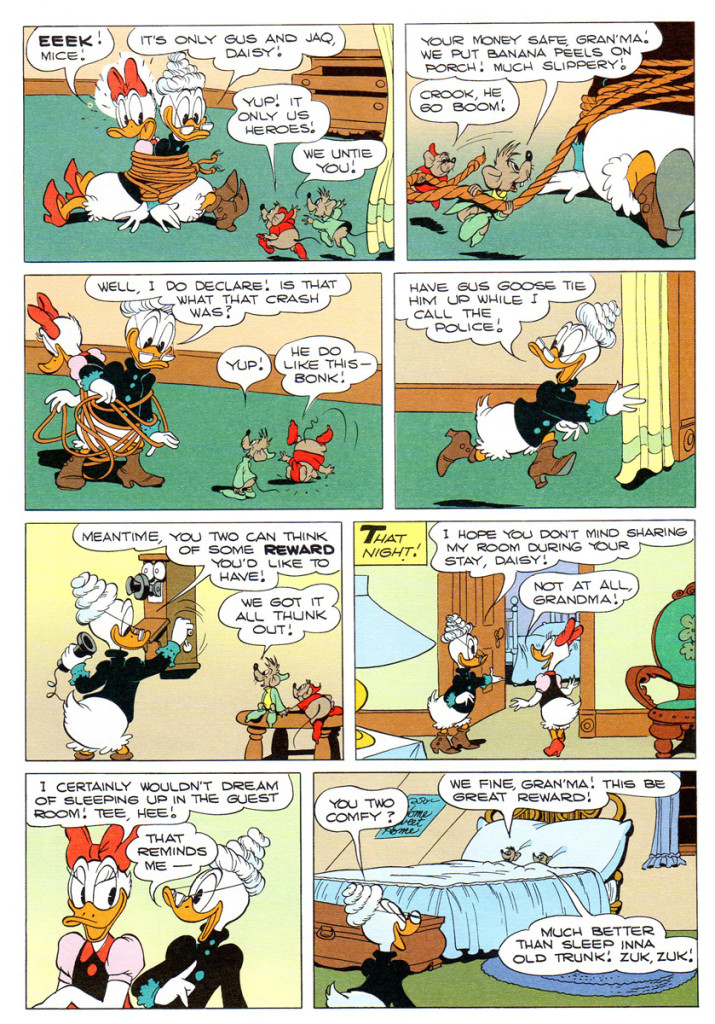

on 23 May 2013 at 12:44 pm 1.Stephen Macquignon said …
Wonderful artwork. I wonder how many kids tried to build a conno out of a tree
on 23 May 2013 at 3:43 pm 2.Veikko Suvanto said …
I’ve followed this blog for some time now, but this is the first time I’ve commented here. Like many kids in Finland, I grew up on Carl Barks’s Duck stories, and lately, about three decades after I first encountered them, I’ve found myself returning to them more and more often. I recently reread both of the Junior Woodchuck stories you’ve included here, and though they weren’t the ones that I remembered most fondly from my childhood, I now had to concede that they are easily among the best ten-pagers Barks ever did. It’s almost a cliché that the best children’s stories are as rewarding to an adult reader as they are to a child, but in Barks’s case I find it to be absolutely true: there’s simply so much to study and to admire on a sheer technical level, in matters like economy of storytelling, composition, timing, etc. that I can read these stories again and again with undiminished enjoyment, even though the stories are familiar to me.
The Grandma Duck story, on the other hand, is entirely new for me, or at any rate one that I remember only dimly, so thanks for it.
One thing I’ve always wondered about in the second Junior Woodchucks story is the inordinately large speech balloon in the first panel of page 7. When I first read this story in Finnish as a kid, I presumed that the translator had simply taken the easy way out there, so I was surprised to find out that it just says “Hmm!” in English as well. I wonder if the balloon originally contained a joke that for some reason was deemed inapproriate for child audiences, or if Barks simply had second thoughts when lettering the story. Has any of the Barks experts like Michael Barrier or Donald Ault shed light on this?
on 23 May 2013 at 5:43 pm 3.Roberto Severino said …
Comic book gold, Mr. Sporn! I would have loved to studied from these wonderful comics as a kid. I only had Nickelodeon Magazine stuff to read when I was about 9 or 10 years old.
Can’t wait to study from these gems! Hopefully I can improve my compositions and backgrounds from doing these. I already have a great handle on drawing solidly and being able to draw from any perspective that I choose.
on 24 May 2013 at 10:41 am 4.Milton Gray said …
To Veikko — I always thought that the inordinately large speech balloon in page 7 was really funny and intentional, because it emphasizes the Grand Marshal’s quiet understatement (as tiny print that looks even tinier in a large balloon), which expresses his utter contempt for Donald’s lack of craftsmanship.